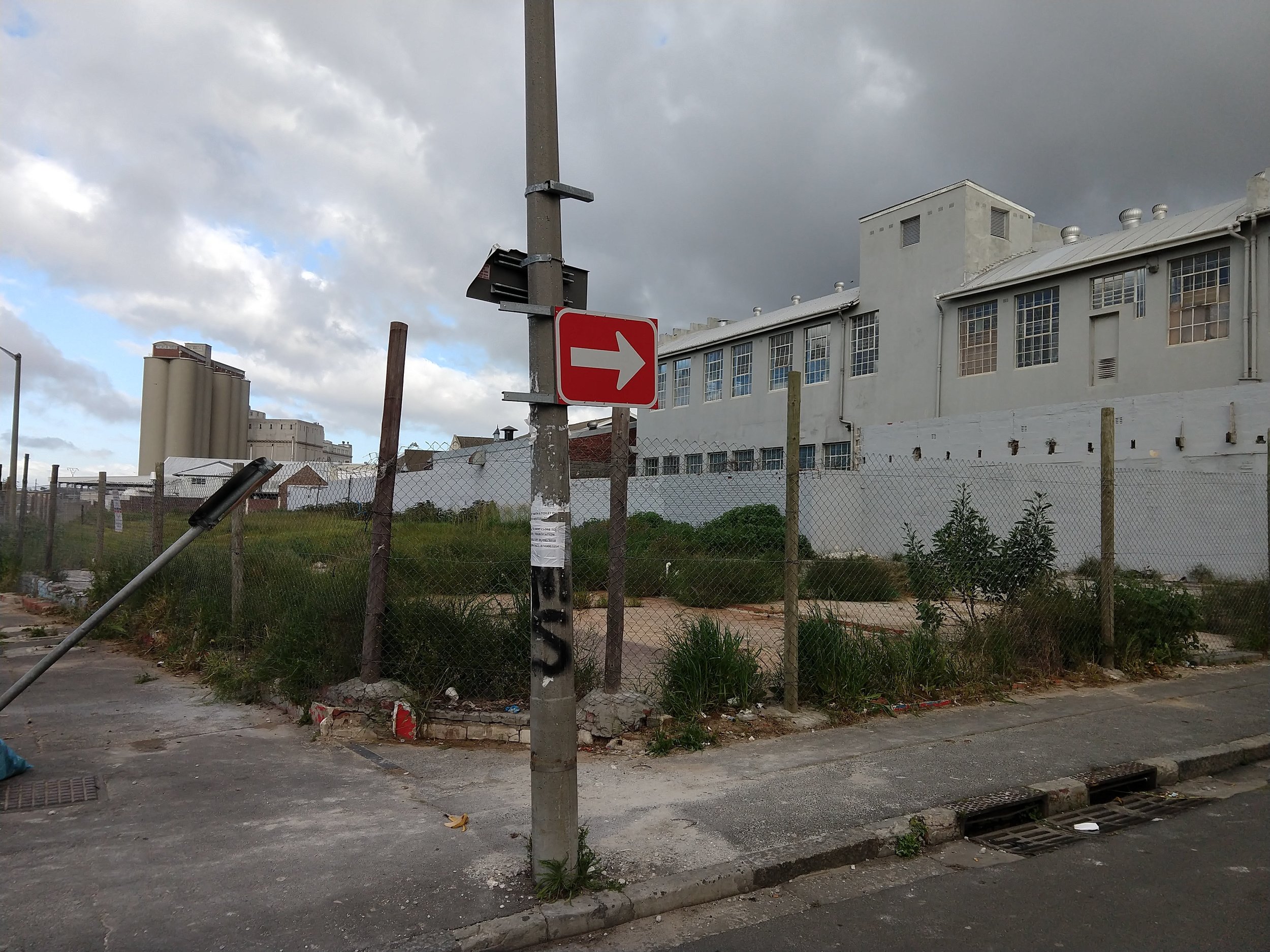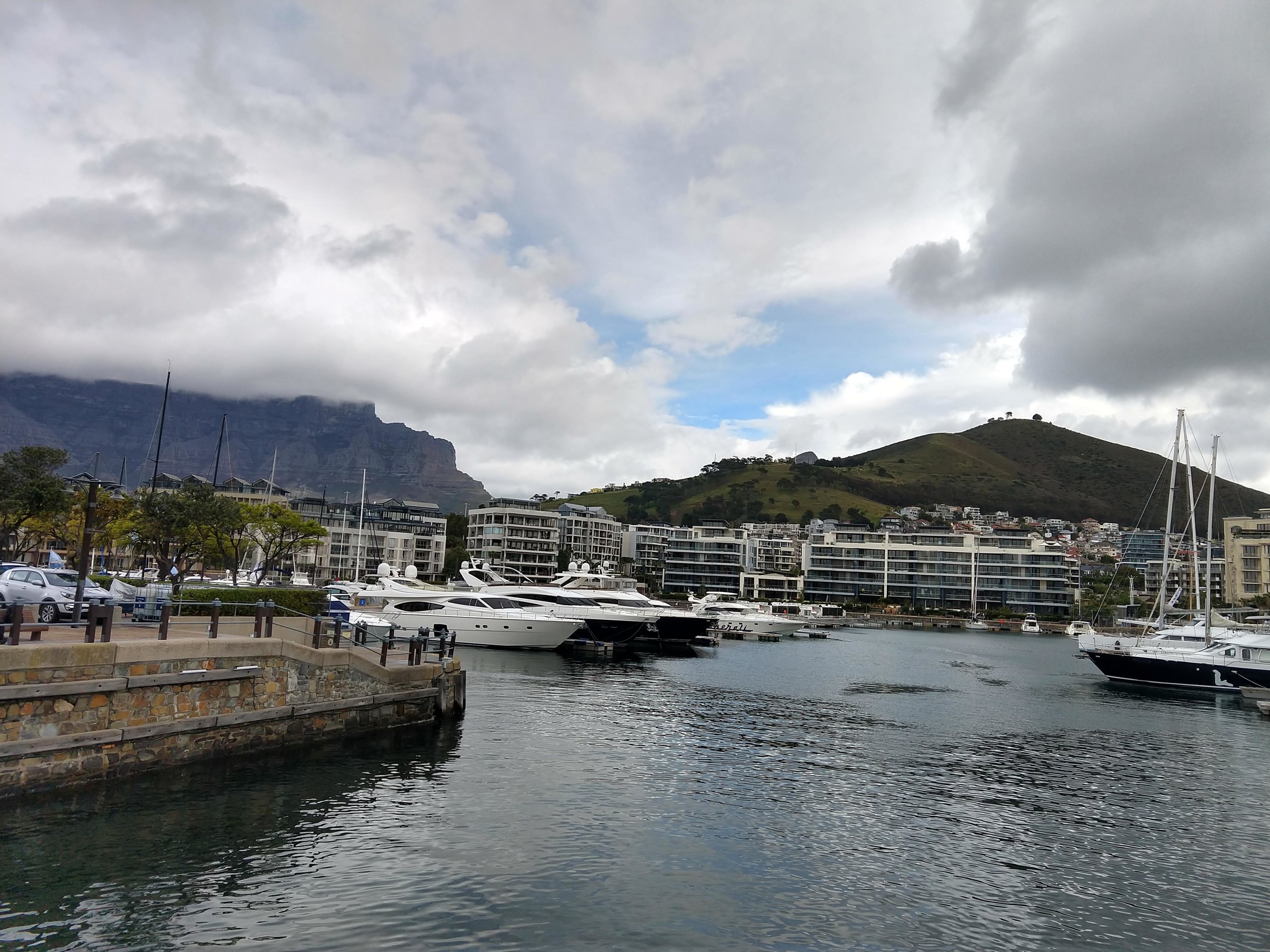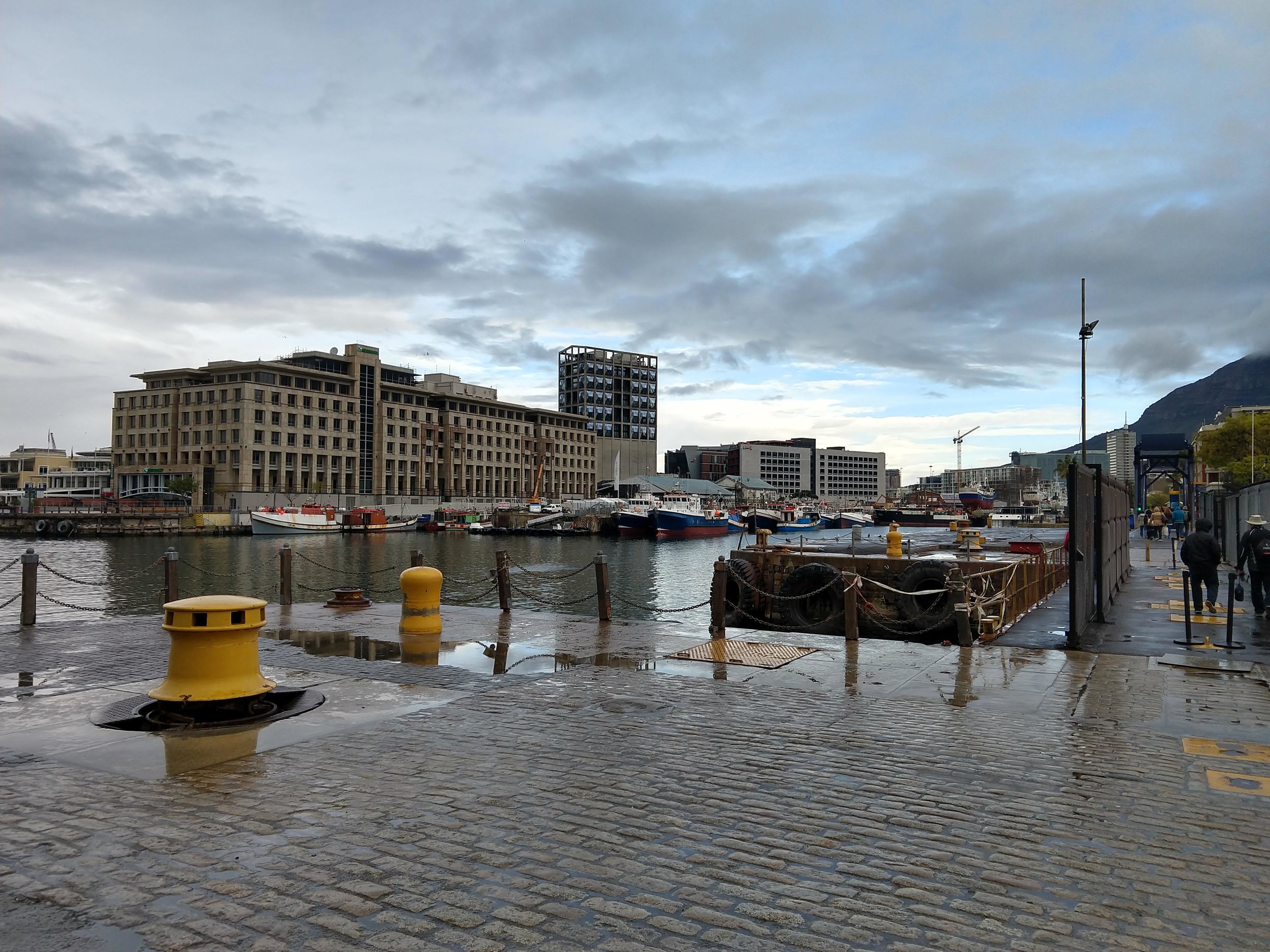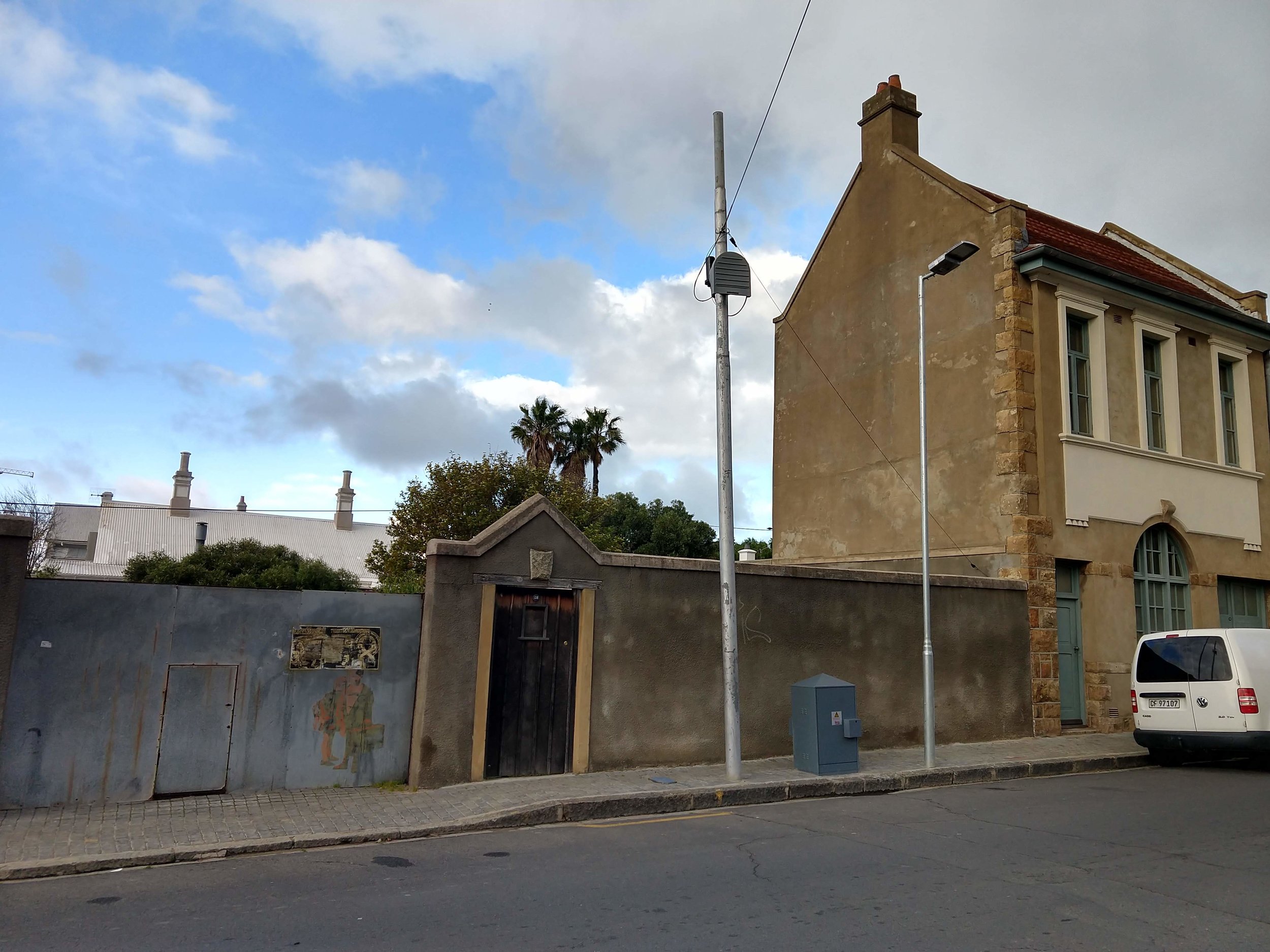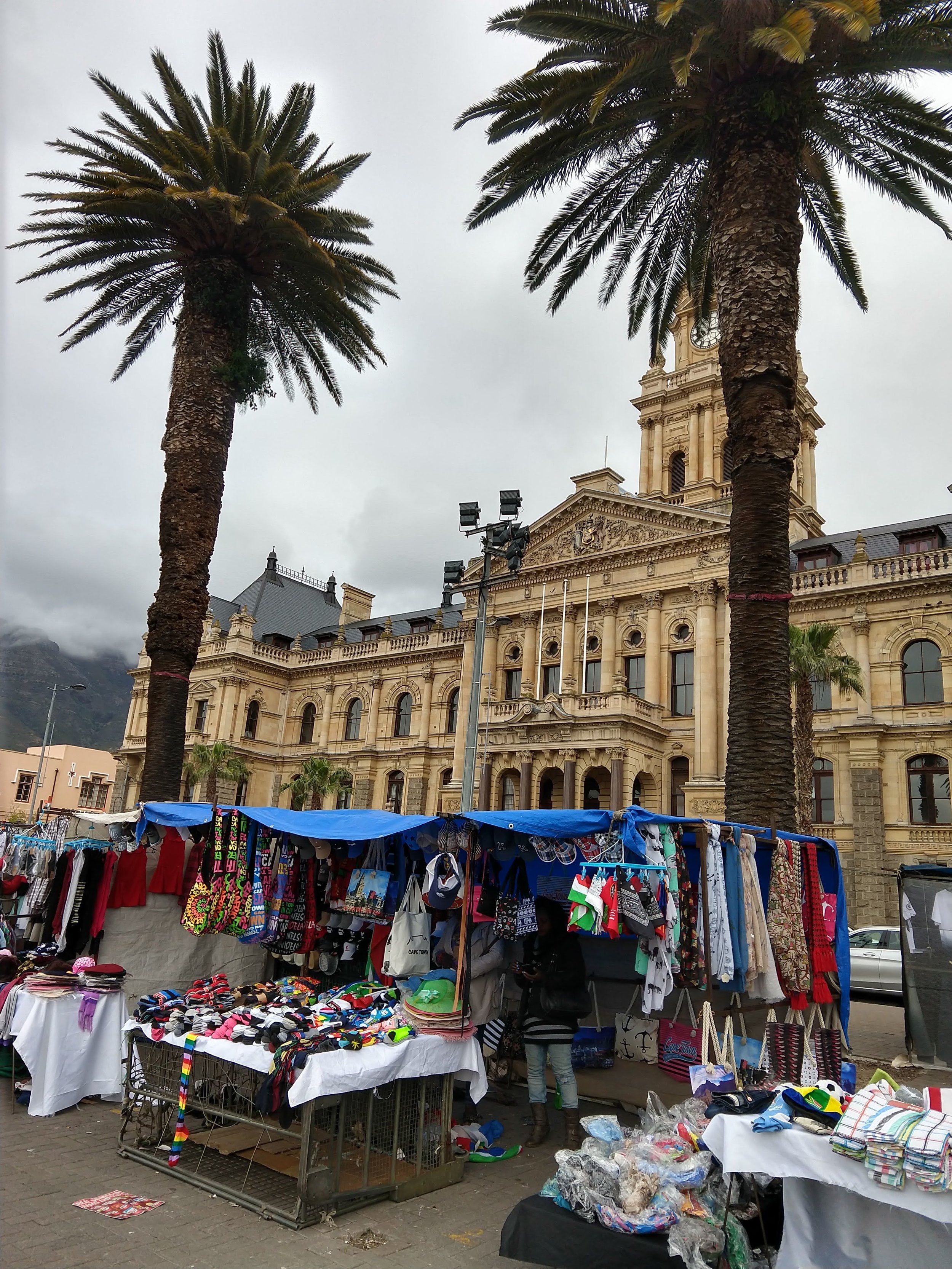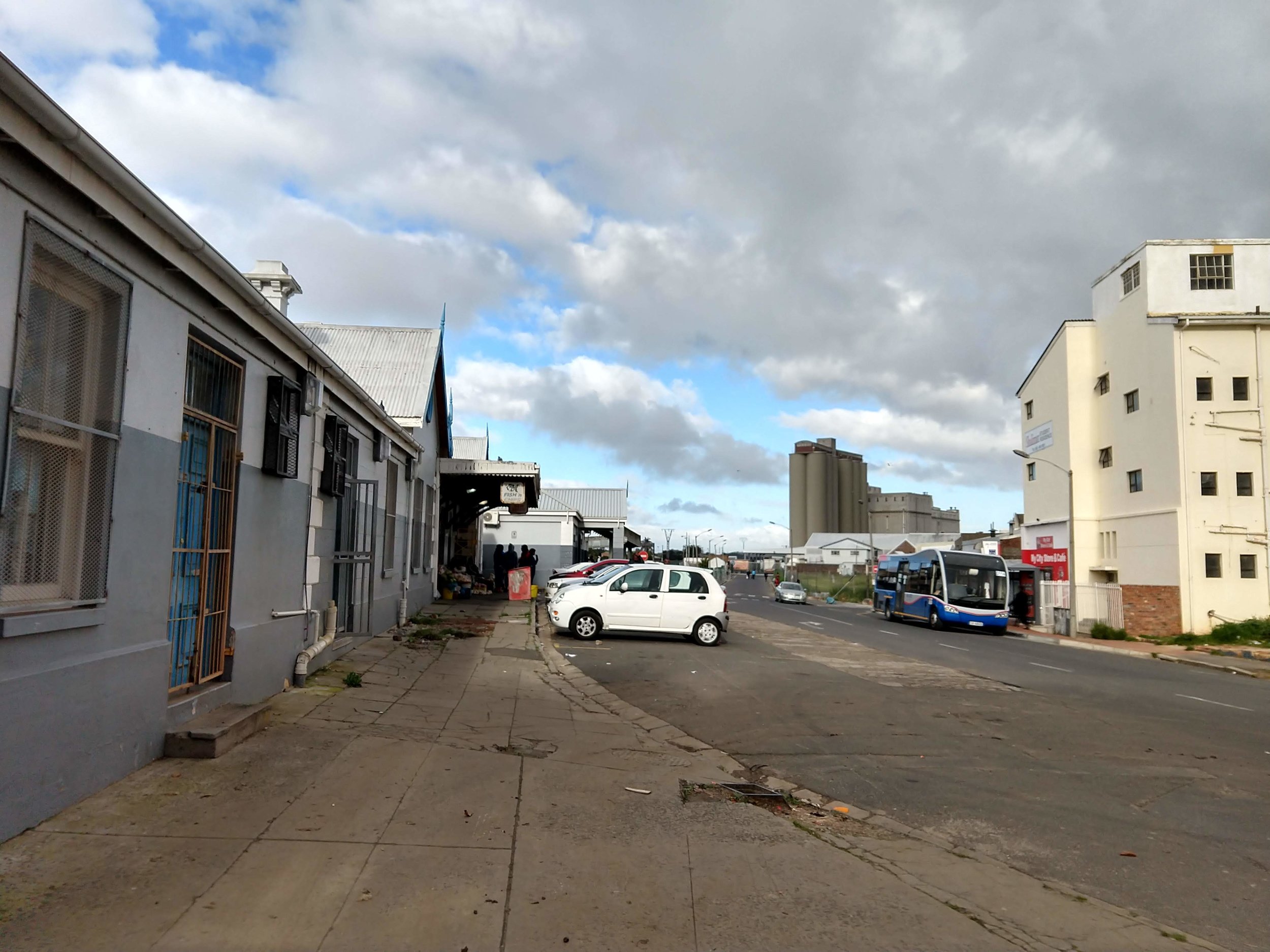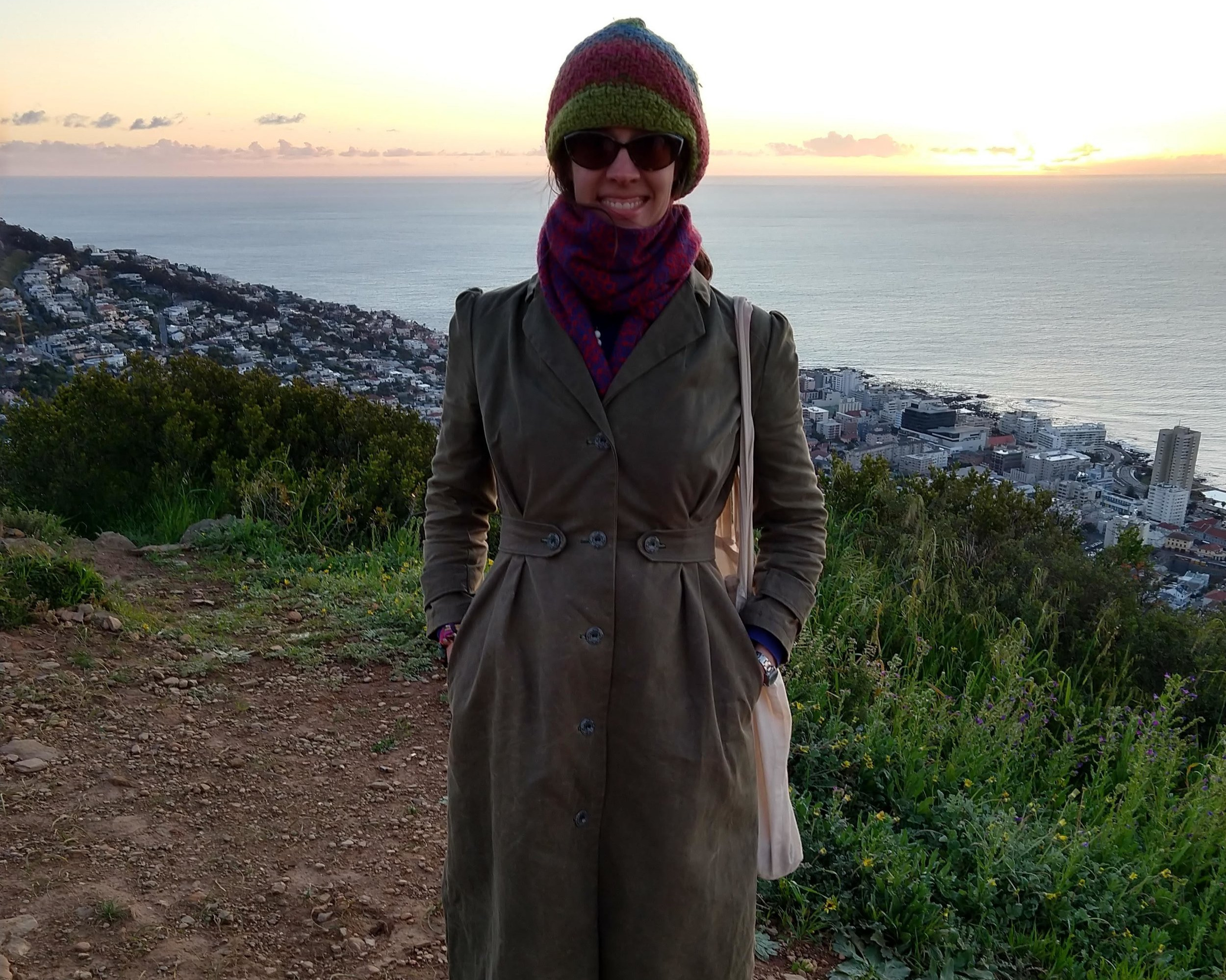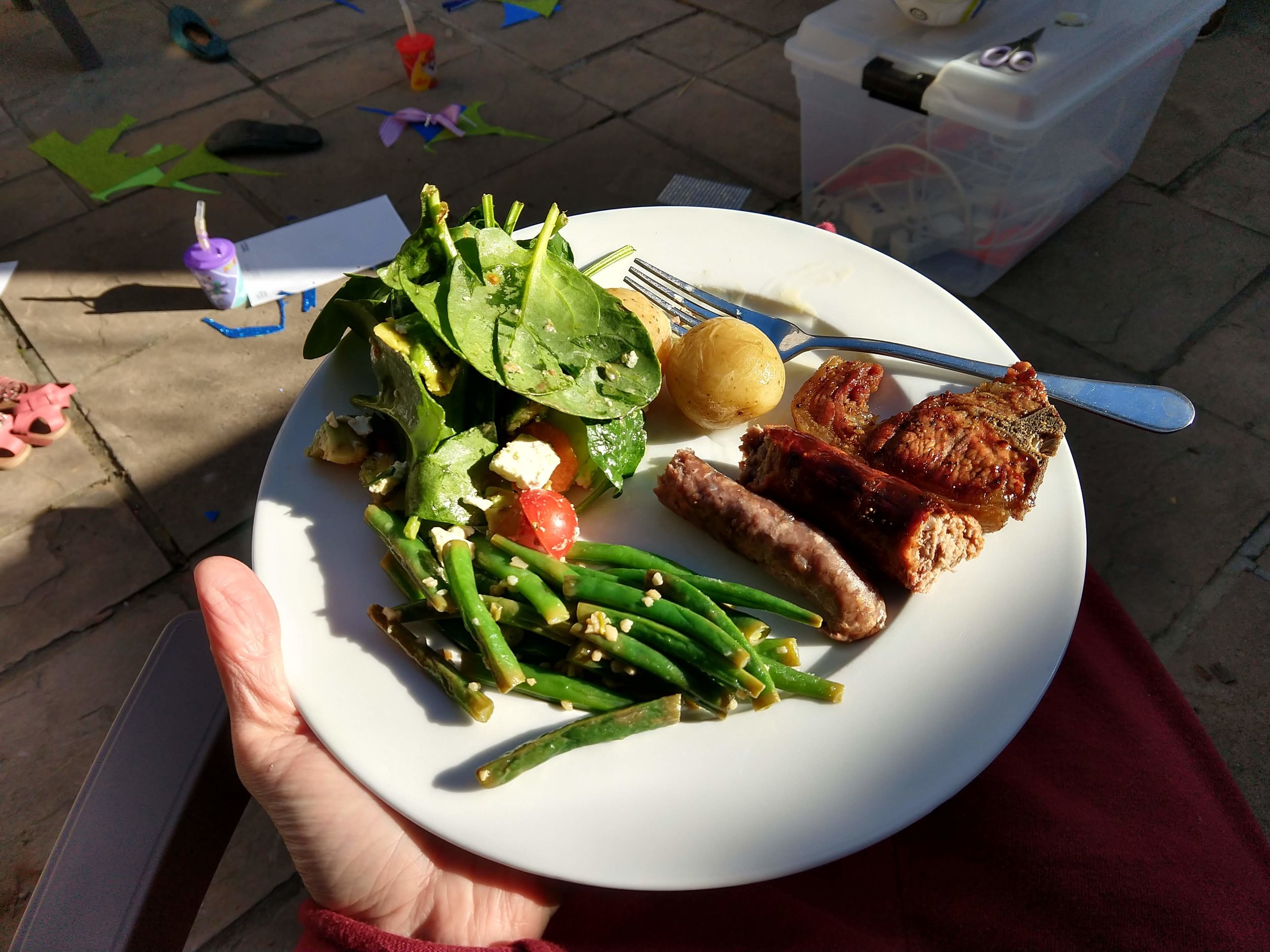GSP 13: Confronting a 'lion' in South Africa
Prior to visiting South Africa, I’m sorry to say I mainly knew it from bad news: the Cape Town drought; apartheid and various stories of theft and violence. I’d met some lovely South Africans (nearly all of European ancestry), but had heard almost no good stories about the country.
My first surprise came as the plane from Addis Ababa descended: lo, Cape Town was green!
As I should have remembered, sub-equatorial countries have their seasons opposite the times of year I grew up with. Thus, mere weeks after I endured the heat of Spanish summer, I reached South Africa near the end of winter — and its rains.
As the plane continued toward the airport, we flew over sprawling homes built on the foothills of Table Mountain.
Cape Town’s famously rugged mountains, seen from the street.
Then at some point close to the airfield, we crossed an invisible boundary. Large homes abruptly gave way to what I’d later recognize as a township: one of the largely poor, almost entirely black neighborhoods that absorb the bulk of new residents who drive South Africa’s rapid urbanization.
Homes in the Tembisa township I visited outside Pretoria, South Africa.
As I would later learn, Cape Town has one of the most segregated cities in South Africa.
Language soon provided another indication of the country’s racial climate. Not long after arrival, I learned that South Africans use at least three terms to describe a person’s ethnicity.
In the vast majority of the population (but not of power): black South Africans, whose tribes include the Zulu, Xhosa and a few others I didn’t learn about. The black population also includes immigrants or refugees from neighboring countries, especially Zimbabwe.
White South Africans, descended primarily from the British and Dutch, constitute less than 10 percent of the population. They presumably own most of the very spacious homes I’d seen nestled in the foothills of Table Mountain.
Lastly, as part of the legacy of colonialism, South Africans call those of mixed ancestry “colored.” (Multiple people told me this term does not have a derogatory connotation, but I later learned that various people have called for an end to its use.)
After visiting so many countries with more homogeneous populations, I struggled with how to represent South Africa’s complicated demographics in my research. At times, the race-based divides and inequality felt the closest to America that I’d felt in several months.
A profound challenge
One night, I met a black South African on a taxi bus, a form of transit also call a mutatu in Kenya, a tro-tro in Ghana. Over a spontaneous beer to continue the conversation, I ended up talking about the journey to confront and admit my own racism.
At one point, he said that if the racism in America were a cat, “We have a lion in South Africa.”
Considering it took my own country 149 years after the U.S. Civil War to reach Ta-Nehisi Coates’ landmark argument for reparations, who can say what South Africa’s journey forward will look like, or how long it will take?
If I saw the world as an atheist, I might share the pessimism Coates has alluded to in other writings. But as a Christian, I believe three things about the world’s brokenness in general, and our persistent sin and wicked response to difference, in particular. I believe:
Racism and race-based injustice are among the reasons God came to earth as a Jewish infant, suffered a brutal death, and rose again. He cares deeply about this.
All people fall short of God’s standard for handling cultural and other differences between people (just as we fall short in every other part of life).
All people have an opportunity to help bring the world God intended. Thus, we all have a chance to help heal the brokenness caused by racism, sexism and others ways we consistently contort difference into hierarchy.
In my own life, seeing how much this matters to God (#1) has led to increasing repentance for my own role in sinning against others because of their race or ethnicity (#2). As I’ve written elsewhere, that repentance seems to have increased my opportunities to help bring healing and justice (#3).
In South Africa, I mostly got to observe — and then very little. But in addition to some of the challenges, I also witnessed part of three efforts to better the world, each in different industries.
Efforts to bring flourishing
Medicine: I started my time in Cape Town at a multi-specialty, multi-country physician meeting focused on efforts to stem a childhood blindness epidemic. (I taught a segment on working with the media.) Though much work remains ahead of these doctors, increased collaboration is vital to ensuring premature infants survive and retain their sight.
Education: Later in my stay, I also attended the release of A School Where I Belong. The book reports on efforts to improve the educational experience of black South African students. View some of the team’s video interviews on the book website. Co-authors Dylan Wray and Roy Hellenberg also founded an effort called FutureProof Schools.
The release for A School Where I Belong drew a large crowd (incompletely shown here).
Housing: In Pretoria, I witnessed efforts to build wealth in townships through Indlu, a novel solution to housing demand. I hope to write more on this elsewhere.
Each of these projects will require incredible long-term endurance, but those I met and heard gave testament to how each person and profession can play a role in bringing God’s good intent for humanity, whether they profess Him or not.
The rest of my ultimately three weeks in South Africa, I focused mainly on my research, but managed a few other tastes of culture and history. I saw Table Mountain at sunset, attended multiple brais (South Africa’s version of a barbecue) and strolled a famous garden in Cape Town. Photo note: The sunset picture shows off the raincoat I finally finished in Finland.
Country snapshot
Water: Drinkable from the tap! Perhaps for this reason, my sourdough did quite well in Cape Town, keeping my hosts and I in pancakes, biscuits and bread. Though the water crisis had improved, many public bathrooms still adjured the user to only flush when necessary.
Beer: $2 or more in a bar, $1 from the store. Thanks to a substantial local craft-beer scene, I had many intriguing options to sample.
Visa: None for Americans, but ironically, I’ve since learned that it’s one of the more difficult places for Africans to visit.
Payment: Cards were widely accepted there, a gift after I discovered fraud on my debit account. Had I been in Nigeria or Ethiopia, I’d have had significant issues getting by until the new debit card came. Strangely, I had to deal with fraud each time I visited — first my debit card, then my credit card.
Transportation: The area around Johannesburg has a limited metro in the Gautrain, but for the most part I used Uber (typically $2-4 a ride on the first visit). During daylight, I sometimes walked and once figured out the local taxi bus — by far, the cheapest way to travel, at $.53.
Phone: Great Google Fi service.
Electricity: Stable on my first visit; subject to daily, scheduled cuts as part of “load shedding” on my second.
Hospitality: Some of the warmest I’ve received. Not only did my first hosts let me extend a week after the debit-card issue, a clothing-store owner in Cape Town let me borrow one of her industrial machines to finish sewing a blouse replacing the one I’d lost in Romania.



